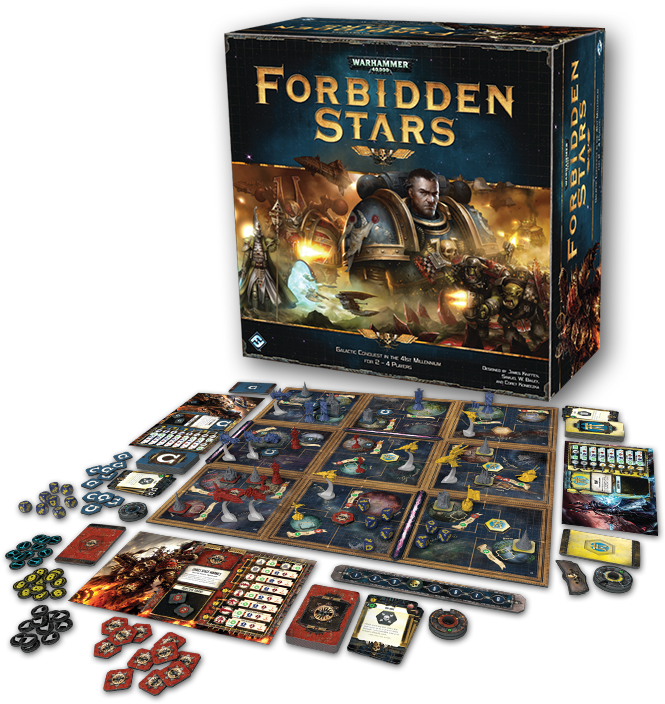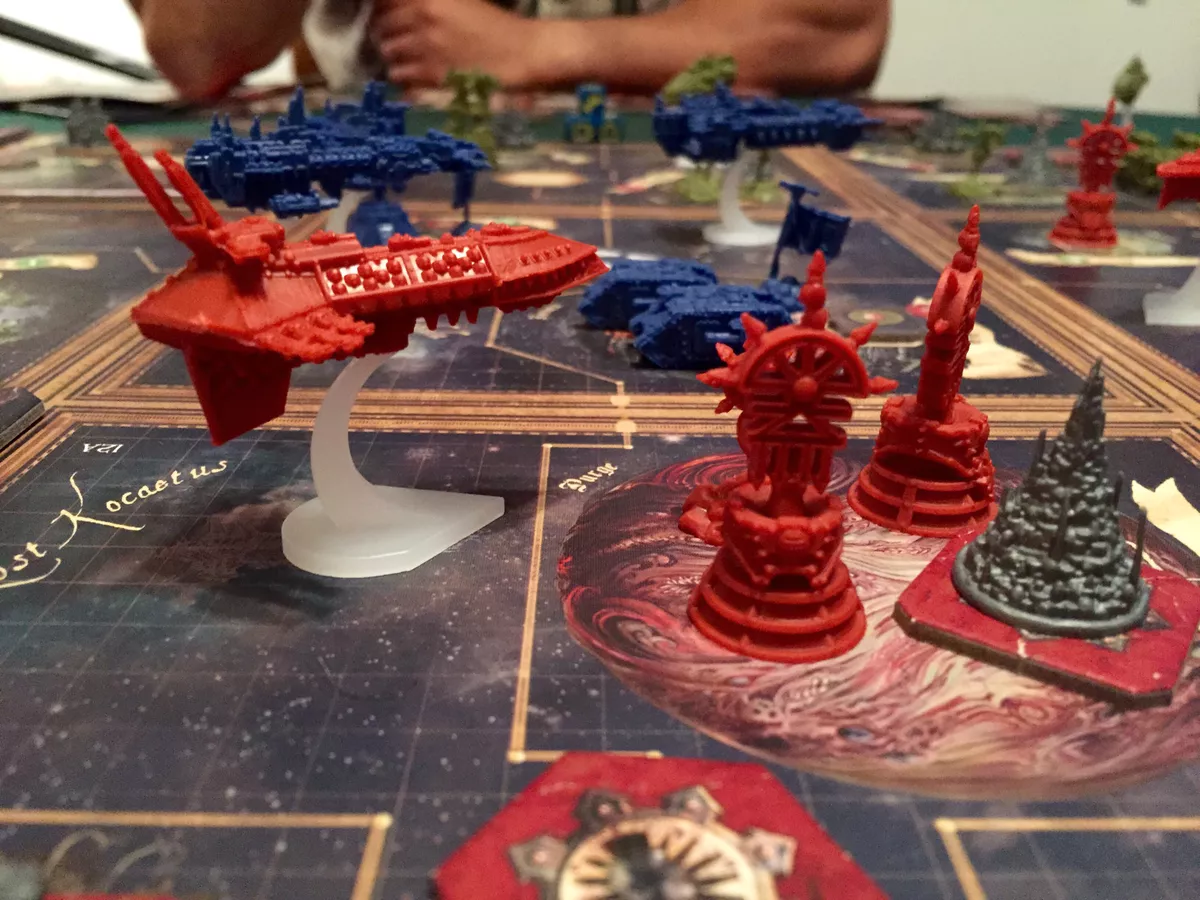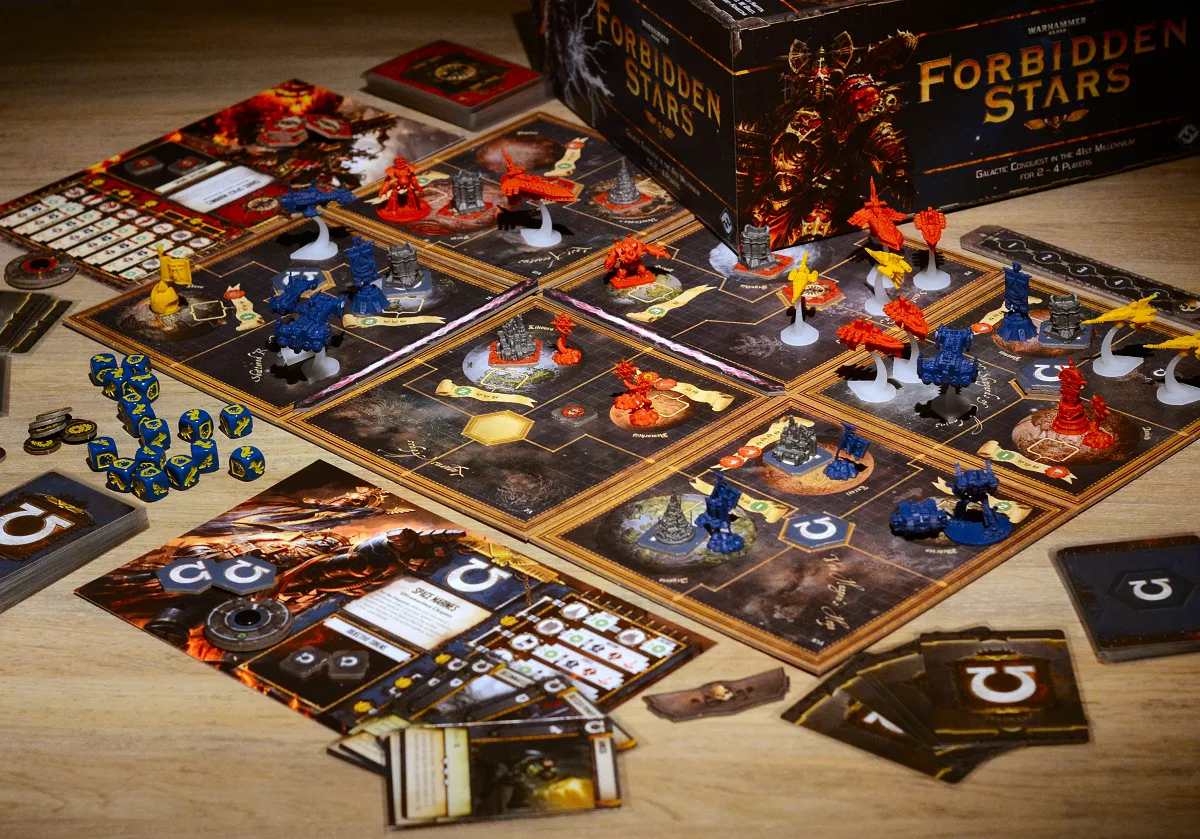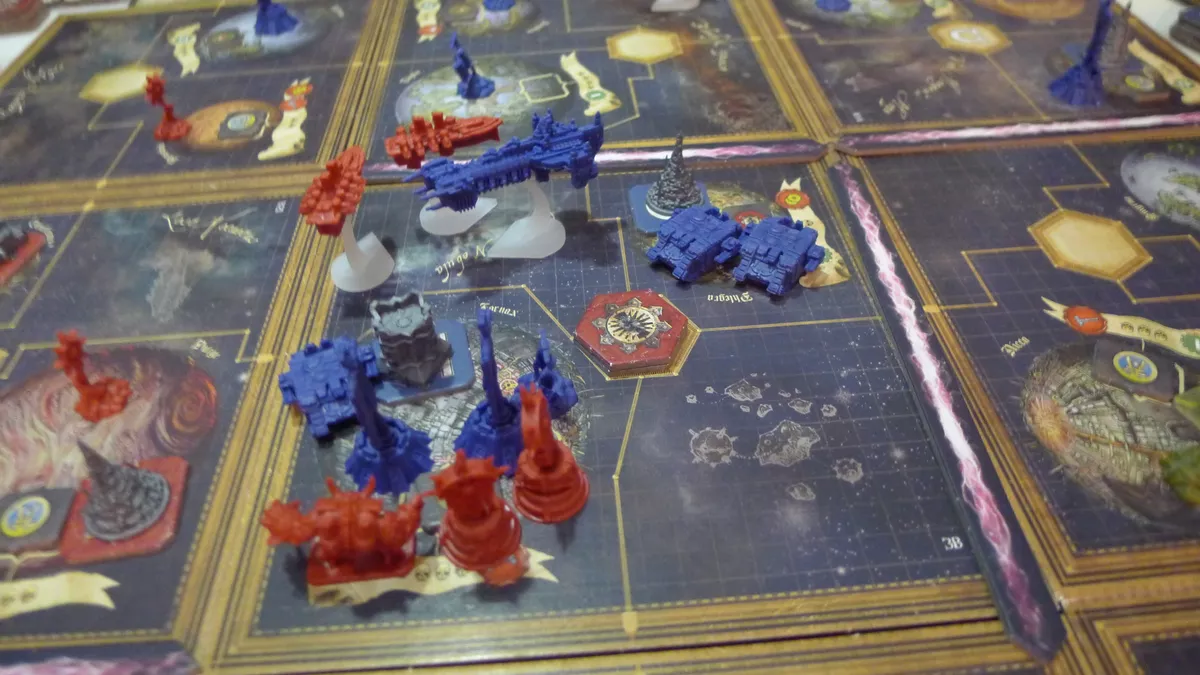Forbidden Stars, the board game where 2-4 players take control of one of the major armies of Warhammer 40,000 and battle for control of the once-lost Herakon Cluster. Each faction seeks to reclaim lost relics and sites of power that are vital to their survival. Control planets, harvest resources, upgrade your forces and conquer your enemies to ensure victory.

The Fantasy Flight board game consists of up to 8 rounds where players clash for objective tokens (these represent important artifacts, people or places). A player wins by capturing 2, 3 or 4 objectives (depending on if there are 2, 3 or 4 total players, respectively), usually through an incredibly interesting and in-depth card battling mechanic.

Modeled with awesome plastic miniatures, each faction has four unique types of ground units and two unique space ships, along with their own unique deck of cards that each player uses to battle when the inevitable time comes. These models will make 40k tabletop players right at home as they’re begging for a beautiful paint job.
Before digging into the gameplay – a big plus this game has is the scalability between player counts. Some games tend to suffer at various player counts but Forbidden Stars shines with its incredible ability to go between 2-4 players with little change in the overall game and strategy. Components, objectives, maps, and more all react well depending on the game’s size.

In a game round there are 3 phases: Planning, Operations and Refresh phase. Players start a round in the planning phase by taking turns placing order tokens. These order tokens, placed face down in a system on the map, determine where and what you’ll do when you carry out that order. But where it gets interesting is that for a given system there is only one stack of order tokens.
After placing 1 order token face down, the person next to you places theirs face down somewhere. It might be on top of your token. When each player has placed 4 tokens on the board, the operations phase begins and players take turns choosing and resolving one token. Each token does something specific- it may move units which can bring about combat, it may allow you to get resources, or it may allow you to build units or upgrade.
You may have put an advance token onto the Ork’s system in order to invade. But the Ork player could’ve covered your token up with their own advance or maybe a Deploy order, allowing them to bolster defenses before you can resolve your advance token.

The order and order stacking / resolving system makes for some incredibly interesting and difficult decisions – do you place a token early only to have it covered? Or do you leave the important tokens to place last so you’re able to strike first. You might have to wait in order to move across two separate systems or you want to deploy that titan first before you launch your attack.
And the attacking? The combat system is very in-depth yet quick enough not to bog down the game as a whole (which is important, especially if you’re in a 4 player game and not involved in the fight). This is where your cards come into play, and getting the upgraded can mean the difference between victory and defeat.
The combat is a perfect mix of dice-rolling luck and critical decision-making. Players roll dice equal to the combat value of the units that are taking place (for example, a land raider rolls 3 dice). These attack dice have 3 different sides, a bolter (for damage), a shield (for stopping damage) and an aquila (morale). Players can use this roll result throughout the combat rounds.

After the dice are rolled, players draw 5 (half) of their combat cards. They then play 3 combat rounds of playing 1 card each and at the end of each round total damage and shields. For example I might have 5 bolters and 4 shield and you might have 3 bolters, 3 shields and 1 morale. At the end of that round I would do 2 damage (difference between my bolters and your shield. We would then play another card which would grant further bonuses and bolters / shields / morale.
It’s not uncommon for units to become routed (damaged but not destroyed) which forces a retreat. This all plays a critical role in future / follow-up attacks.
I would say the biggest drawback of Forbidden Stars is that a lot is determined in the game setup. For a normal (non-introductory) game, setup involves choosing where starting units go (each person taking a turn placing one unit) and placing other players’ objectives. This can make or break the game, where sometimes other players might inadvertently give easy points to another player. The introductory game that is given in the learn to play manual is really good and should absolutely be used for any new players for their first couple games.

Other than that, I think the only smaller gripes would be playtime can get pretty long, even with smaller player counts. We would take around 4 hours to play one game, though we are historically slow players to begin with.
There’s also fantastic fan-made expansions to include other races such as Tau, Necron, Imperial Guard and Tyranids. I have yet to try them.
The elephant in the room though is the fact that this game has been out of print for a while now. Sadly FF games lost the rights to Warhammer 40k (I believe it was a conflict of interest-type deal because FF was also working on Star Wars IP games). Now it is very difficult to get your hands on a copy, but it is very worth it for those that love Ameritrash games like this.